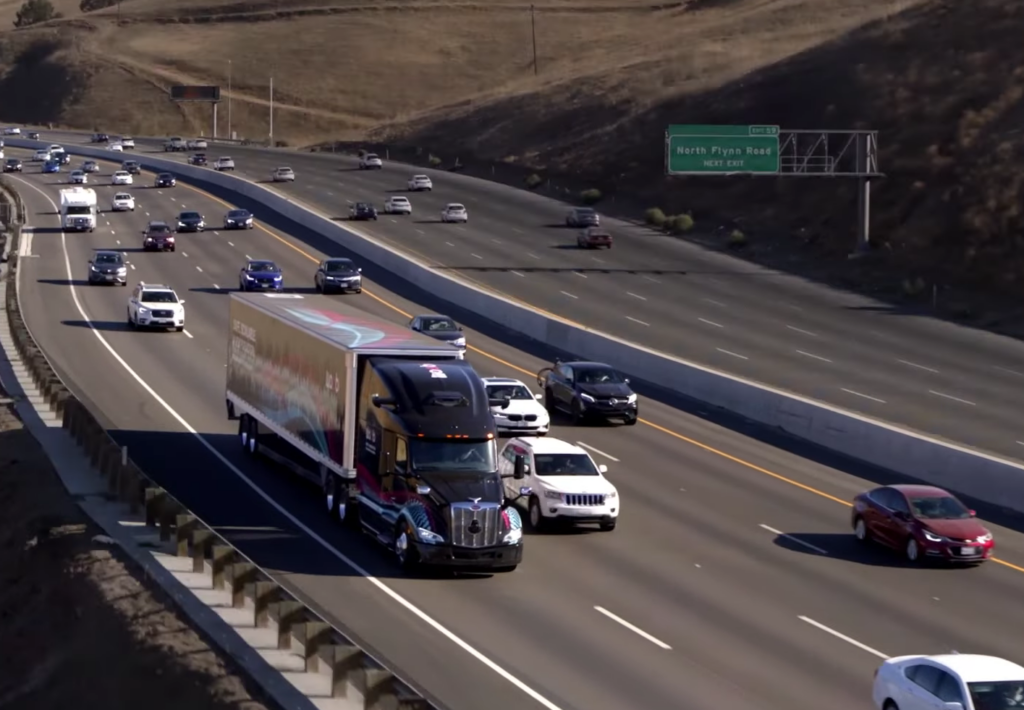Waabi applying AI and simulations to advance autonomous trucks
Raquel Urtasun wants to teach autonomous trucks a thing or two.
Waabi, the Toronto-headquartered business she founded, is combining artificial intelligence (AI) and its Waabi World closed loop simulator in a bid to accelerate the rollout of such equipment.
Picture an automated driving school for the autonomous trucks themselves. Computer-simulated lessons are applied to the Waabi Driver, which combines a software stack, sensors and hardware, all to be integrated by truck OEMs at a factory level.

It can seem like an unusual approach at a time when many autonomous vehicle developers appear hyper-focused on the test results from tracks or highway segments. But the Waabi team questions whether those tests are truly scalable or the best way to test edge cases.
“The way they do testing to understand where the issues are that they need to fix is by having large fleets that are driving many, many, many miles on the road, and this is not the most sustainable solution. This is not the safest or the most scalable solution,” Urtasun says. “The better the system gets, the more you need to drive to find your problems.
“Many situations are very rare, but there’s many of them – which means that you will need to drive potentially billions of miles to actually see once one of those situations.”
In contrast, the AI and simulations can test how trucks would react in the face of diverse challenges, whether they come in the form of weather or unexpected actions by other vehicles.
“Everything that you see in the world can directly be translated into the simulator,” Waabi’s CEO says.

Who is Urtasun?
Urtasun established herself as one of the world’s leading minds in autonomous vehicle development when she served as chief scientist at Uber. Once that related business unit was sold to Aurora Innovation, she and many team members established Waabi and its focus on autonomous trucks rather than cars.
Much of the “deep technology” and the intellectual property emerged on this side of the Canada-U.S. border, too.
The landscape of autonomous vehicle development is vastly different today than it was in 2017, she says, citing advancements in sensor suites and computing power alike. “We can capitalize on all the work that’s happened.”
But Urtasun believes the work has yet to experience the truly disruptive influence of artificial intelligence. That’s where Waabi’s work would apply.
There’s also a greater focus on how such technology would apply to the biggest vehicles on the road.
“Bringing automation to [trucking] is a must, where in robo taxis it’s not obvious,” she says of the business case. Hub-to-hub highway trips are also better fits. “Highways are much more structured, so it’s easier to solve.”
“Bringing automation to [trucking] is a must.”
– Raquel Urtasun, Waabi founder and CEO
Then there’s the matter of economics. It’s easier to make the business case to add a costly sensor kit to a truck worth $250,000 rather than the family car.
Ultimately, the work is about finding ways to make trucks more productive. Out of a 14-hour workday, drivers only realize 6.5 hours of actual utility, says Waabi head of transportation Dustin Koehl, who spent four years with the autonomous vehicle development program at U.S. Xpress, and was chairman of the American Trucking Associations’ (ATA’s) automated truck committee.
“There’s not a lot of industries that talk about a 70-hour clock,” he adds, referring to social factors that make a truck driver’s job particularly difficult.
“I think we can lead the discussion around optimization.”

Applications of autonomous trucks
Koehl also believes some developers may not see the nuanced ways autonomous trucks could be applied to address industry needs.
“Technology companies don’t necessarily know how to speak trucking,” he says.
“There’s so many scenarios that developers just don’t understand. I give the example of the LTL consolidated world that, if you’re running from Charlotte to Los Angeles, may go through 12 to 13 terminals or what we would define as gates. So, what does that world look like in autonomy? That length of haul matters. The Hours of Service, they’re going to matter.
“Traditional truckers in the country, they understand the need for kind of meet and turns – or what we call relays – where you could slip seat,” he adds. “That’s the beauty of autonomous trucks, that you could see an uptime of 16 to 18 hours if you have that system in place. That’s why we’ve got to be able to connect the dots in these states to ensure that we can run across I10 or 20 or 35.”
“That length of haul matters. The Hours of Service, they’re going to matter.”
– Dustin Koehl, Waabi head of transportation
The U.S. lacks a federal framework for rules that would allow such widespread trips, but more than 40 states now allow autonomous vehicle tests of some sort, Koehl says. And most of those continue to be anchored in warm southwestern states such as New Mexico, Arizona and Texas. (Waabi is conducting tests of its own in the region but has yet to publicly reveal any specific details.) “Texas is the lighting rod for product demonstrations,” he says.
U.S. regulations are more advanced than those in Canada, Urtasun concedes, suggesting that Ontario offers the most favorable testing environment even if the province’s framework focuses more on cars than trucks. “We are collaborating with the government to look into avenues for moving that towards Class 8 commercial vehicles which are the backbone of our economy,” she says.
But once the various pieces come together, she predicts “hockey stick” growth for autonomous truck applications as they expand from one region to the next.
“That is not too far off,” she says. “The future is pretty bright, relatively soon.”
Technical and operational challenges
Before that happens, however, there are still other challenges to address — not the least of which are linked to weather conditions. Snow and ice can mask lane markings tracked by cameras, and sensors still tend to identify clouds of exhaust as physical barriers.
They’re issues that Urtasun is confident will be overcome, and sooner than some people think.
No matter where and when such trucks are deployed, she also stresses the work isn’t about displacing jobs.
“We are not here to really displace jobs. We’re an additional mode of transportation,” she says, framing the technology as a way to help address ongoing truck driver shortages.
“A driver today is going to retire as a driver,” Koehl agrees.
But the “safety drivers” who have to ride along inside autonomous trucks during today’s tests will eventually need to be removed, he adds. “The driver has to be out for this type of technology and capital investment to see meaningful results.”
The Waabi team doesn’t see a future for autonomous vehicle systems installed as aftermarket devices, either. That mindset makes a January investment by Volvo Group Venture Capital particularly important, opening the door to a closer integration with the brand’s equipment.
Those funds build on other high-profile financial backers including Uber, Aurora Innovation, and computer scientist Geoffrey Hinton, and an initial funding round that secured US$83.5 million in 2021.
Says Urtasun: “There is a lot of excitement in this technology, what it represents and what it’s going to bring.”
Have your say
This is a moderated forum. Comments will no longer be published unless they are accompanied by a first and last name and a verifiable email address. (Today's Trucking will not publish or share the email address.) Profane language and content deemed to be libelous, racist, or threatening in nature will not be published under any circumstances.